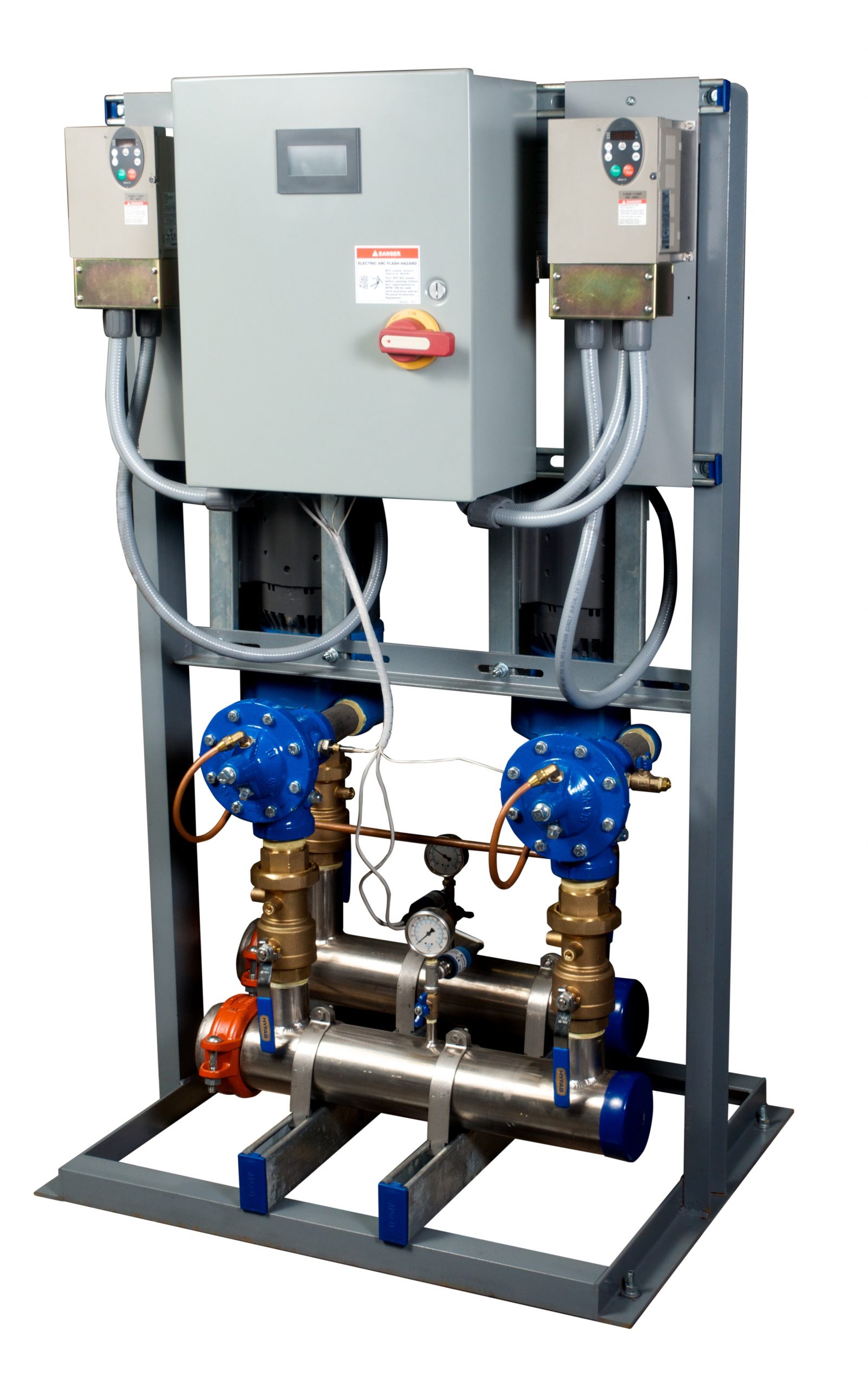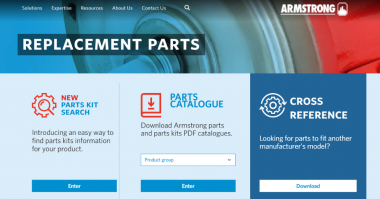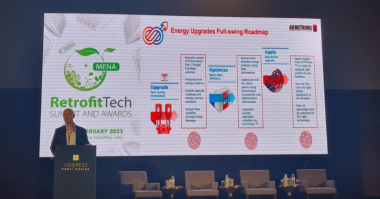The American Society of Heating, Refrigerating and Air Conditioning Engineers (ASHRAE) recently passed an update to the world’s most adopted building energy code. ASHRAE 90.1 outlines minimum energy code standards for new buildings and new equipment in existing buildings, except low-rise residential. The code includes stipulations for a building’s envelope, as well as HVAC, service water heating, and power and lighting systems.
The most recent update to this code, ASHRAE 90.1-2010, is a joint effort between ASHRAE and the Department of Energy (DOE) to push commercial buildings toward net zero performance, which means buildings should produce as much energy from renewable resources as they consume. These code changes will have a huge impact for mechanical contractors, engineers and building owners. The official date by which all states are required to certify that they have updated their commercial building codes to meet or exceed ASHRAE 90.1-2010 is October 18, 2013.
The passage of ASHRAE 90.1-2010 did not go unnoticed by personnel from HYFAB (Greensboro, N.C.), a James M. Pleasants-owned Company. HYFAB specializes in thoughtfully engineered energy efficient pumping packages for virtually any HVAC or plumbing application. With a comprehensive line of standard pumping packages, customers are able to enjoy all the benefits of a custom-built system without the wait.
Chris Edmondson, CEO of James M. Pleasants Company (JMP) immediately zeroed in on Section 10.4 of the new ASHRAE 90.1-2010 which states that pressure booster systems may no longer be controlled by set points that are based on pump discharge pressures. Instead, the pressure boosters must be controlled by demand, which typically means installing a pressure sensor remotely in the system, typically at the “critical fixture,” or the highest point in the system. The sensor will need to start the pressure booster and control its speed, and the booster pumps must turn off when there is no flow. The new standard also prohibits the use of pressure-reducing valves (PRVs) to reduce the pressure of water supplied by booster system pumps. While the standard does not prohibit using PRVs for zones or individual floors, it does prohibit pumping all of the water to a high pressure and then reducing it at the booster pump.
The bottom line for hydronic systems is that constant speed pressure boosters are dead. While constant speed pressure boosters give buildings a nice, consistent pressure, they use a lot of energy. A variable speed pressure booster that bases its setpoint on the building’s most remote fixture, instead of the reading seen at the pump discharge, will allow the pump to run at a lower speed. This is possible because the controller is able to take into account the reduction in piping pressure at lower flow which can translate into a significant operating cost savings for a variable speed pump system.
HYFAB first introduced its standardized line of variable speed pressure boosters in 2009, long before ASHRAE 90.1-2010. The company chose to standardize its booster line on the Altivar™ 21 and Altivar 212 variable frequency drives (VFDs) from Schneider Electric, The Global Specialist in Energy Management™ that offers integrated solutions across multiple market segments.
HYFAB personnel and a Schneider Electric application design engineer formed a cooperative partnership and worked together to co-engineer the system. After having great success with Schneider Electric drives, HYFAB began considering standardizing its variable speed boosters with a Schneider Electric controller. One of the advantages of a Schneider Electric controller was the ability to integrate a touch screen.
“It seems like the industry clamors for touch screen,” said Mark Bingham, team leader, HYFAB. “A touch screen improves ease of use for operators and also gives more feedback about the status of the system.”
Schneider Electric recommended its Modicon™ M168 programmable logic controller (PLC) with a built-in operator interface. The M168 PLC increases machine performance with better control at full and partial loads by integrating variable speed drives and using energy efficient application function blocks. The PLC is web-enabled to allow remote monitoring, and also is easily integrated into building management system (BMS) platforms through an optional BACnet communications module.
“We received exceptional application assistance from Schneider Electric engineers,” Bingham said. “They understood the products and the industries that the products needed to work in and we were able to speak the same language. They helped us to optimize the application of the product and gave us confidence that the M168 was the right controller for us. That decision was reinforced as we learned more about the programmability and robustness of it.”
One of the features about the M168 PLC that was especially attractive to HYFAB was the redundant operator interfaces.
“We can unplug the touch screen on the M168 and still have full functionality of the controller. The redundancy of the interfaces provides our customers with greater reliability,” Bingham said. “Plus, the new touch screen is light years ahead of the single color interface we were using before, and it’s greatly simplified users’ interactions.”
The ASHRAE 90.1-2010 code has prompted HYFAB to take its standardized line of variable speed pressure boosters one step further. Since it can be very costly to hardwire a distant sensor at a building’s highest point, HYFAB has developed alternative logic that simulates remote monitoring. Typically it is not recommended to remote sense across a BAS system, however the HYFAB logic accurately simulates remote monitoring without BAS involvement, allowing a system to be 90.1-2010 compliant without installing a pressure sensor at the critical fixture. Rather, the control logic resets the pressure booster set point based on measured demand. This benefits the owner by providing additional energy savings at lower demand, without the added cost of remote sensing.
HYFAB partially credits the programmability and capability of the M168 controller with being able to execute this alternative logic.
“We’ve found that we’re able to implement more complex algorithms than we believe we would have been able to do with our prior vendor,” Bingham said. “We probably would not have been able to execute the alternative logic for ASHRAE 90.1-2010 compliance with the old controller and drive. Schneider Electric has allowed us to bring more innovative products to market.”
HYFAB also appreciates how the controller integrates seamlessly with the Altivar variable speed drives.
“Since we integrated with the drives, we’re able to have a single button reset from the controller that automatically clears all the alarms when there’s a fault,” Bingham said. “This makes it simple for the maintenance professionals who aren’t as familiar with the controls aspect. Instead of having to reset a fault on each of two drives and the controller, we can reset everything from one button on the controller.”
According to Bingham, anything that HYFAB can do to simplify the product is helpful to end users.
“As equipment becomes more and more energy efficient, how it gets applied is more complicated,” Bingham said. “It can be difficult for a designer to properly apply all of the components in a hydronics system, and if the system is designed properly, it may not be installed correctly. That’s why HYFAB pre-engineers a skid thoughtfully and properly with all the components on the package so that it’s literally plug and play, and it’s also why a simple user experience is important to us.”
To learn more about Schneider Electric’s solutions for the pumping industry, please visit http://products.schneider-electric.us/solutions/oem-solutions/pumping-equipment.
To learn more about HYFAB, please visit their web site at www.hyfabco.com or contact Chad Edmondson at Chade@jmpco.com.
About the Authors
Gary Shevlin is an OEM business development specialist for Schneider Electric. He attended Rochester Institute of Technology (RIT) and graduated with a Bachelor of Science degree in manufacturing engineering technology]. Shevlin has been with Schneider Electric for 13 years and is based in Charlotte, N.C. He can be reached at gary.shevlin@schneider-electric.com.
Jack Creamer is the Market Segment Manager, focused on the Pumping Equipment manufacturer sector, including those organizations that manufacture Pumps, as well as, those design and build complete pump systems, and those who build dedicated Pump Controls. He holds a MBA from Rensselaer Polytechnic Institute and a BSIE from Syracuse University. Creamer has been with Schneider Electric/Square D for 20+ years, holding various positions in Customer Marketing, Product Marketing and Automation Sales. He can be reached at jack.creamer@schneider-electric.com.





Comments